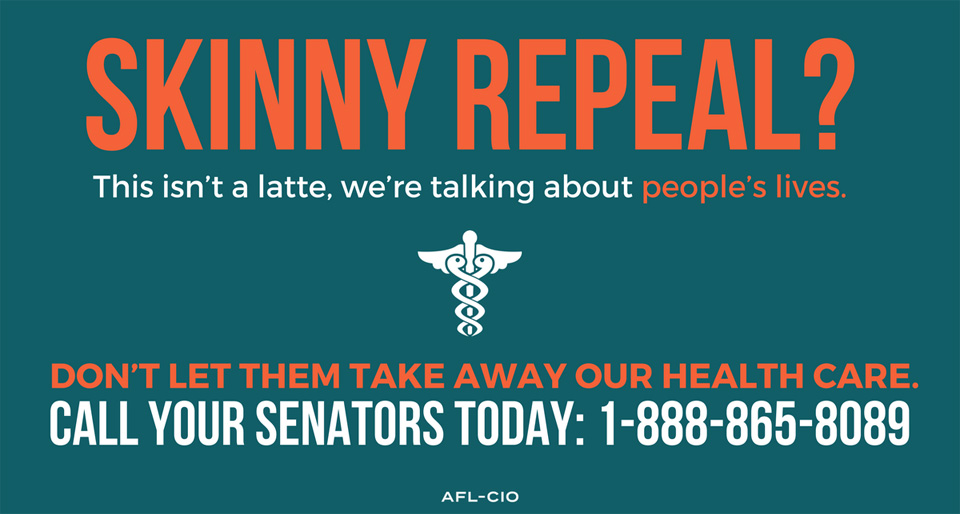
On Tuesday, the Senate voted to open debate on the repeal of the Affordable Care Act. However, what exactly they were voting to debate was unclear. The perceived political imperative on the Republican side led them to open debate on an idea rather than a piece of legislation, which all but guarantees a long, drawn-out process to figure out how to lay the groundwork to strip millions of health insurance while taking as little responsibility as possible.
Shortly after debate was opened, the Senate voted down the latest version of Better Care Reconciliation Act (Trumpcare). That legislation represented the most comprehensive “repeal and replace” option and while it needed 60 votes to pass, it was defeated 43-57. This legislation would have slashed Medicaid funding by at least $700 billion, granted tax breaks to the rich, reduced health insurance subsidies for the poor and allowed insurance companies to sell skimpy policies that fail to meet the Affordable Care Act (Obamacare) standards of coverage.
Senate Republicans voted on a “repeal only” option Wednesday night, which also failed. The implementation of the “repeal only” bill would hae undone the individual mandate, the employer mandate, and medical device taxes immediately while phasing out insurance subsidies by 2020 and beginning the elimination of Medicaid expansion in 2020. The Congressional Budget Office analysis indicates that its passage would have left up to 32 million more without health insurance by 2026.
Given the lack of sufficient support for anything they’ve proposed so far, the Senate Republican leadership is exploring a new path: the so-called “skinny repeal.” The appeal of the skinny repeal is that it allows the Senate Republicans to pass the buck to the House Republicans by passing what amounts to a shell of the previous pieces of legislation.
By only repealing the individual and employer mandates, as well as the medical device taxes, the Senate Republicans are punting on the more controversial aspects of their reactionary agenda (i.e., cuts to Medicaid, restructuring of the tax credit system on the individual market).
If they pass a skinny repeal, it goes to the House. The House would have the option of voting to pass the skinny repeal outright, or going to conference where the Senate and House Republicans would attempt to synthesize a more comprehensive piece of legislation.
Unfortunately, the passage of even the skinniest repeal possible would devastate the lives of millions.
The Congressional Budget Office estimated that as many as 15 million people will lose their health insurance if just the individual mandate were repealed. It would also cause insurance premiums to increase by up to 20 percent. This is because the individual mandate was passed to increase the pool of insured, which would cause the risk to the insurance company to be spread out among more people, which is supposed to result in lower prices.
Sen. Elizabeth Warren characterized a skinny repeal as “gut it and run.”
While the Democrats are in the minority in both chambers of Congress, they can only watch and speak out as their Republican colleagues scramble to satisfy the wishes of their corporate base. So far, no Democrat has broken ranks to support a GOP effort to repeal the ACA.
Popular protest continues to rage in the Capitol and in Republican senators’ home states. Moments before the vote to open debate, dozens of protestors in the Senate gallery chanted, “Kill the bill, don’t kill us,” and were subsequently removed. Over 90 protestors were arrested on Capitol grounds, including both disabled activists and healthcare professionals.










